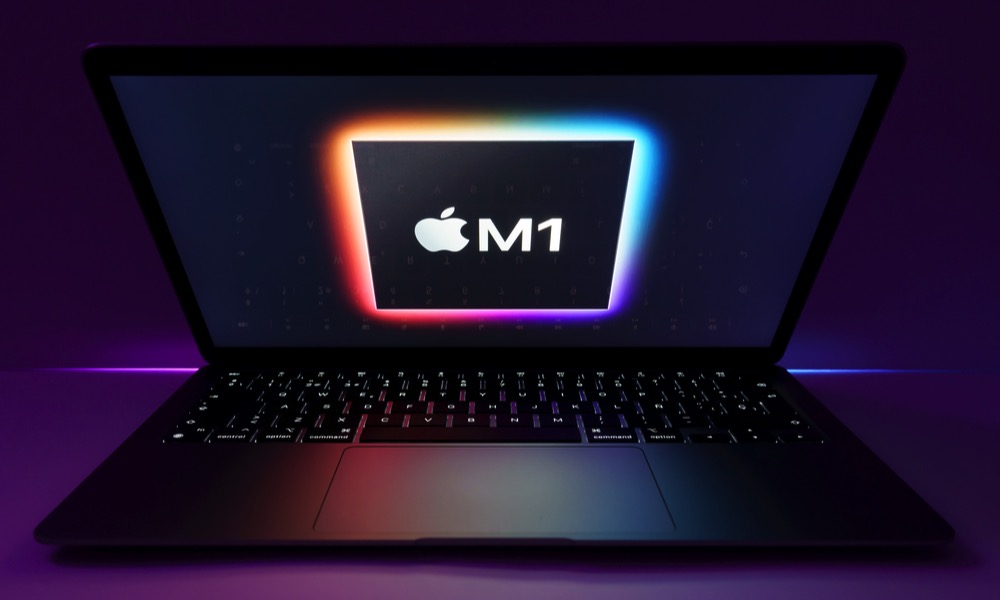Apple Executives Thought the M1 MacBook’s Unbelievable Battery Life Was a Bug in macOS
 Credit: Nanain / Shutterstock
Credit: Nanain / Shutterstock
Toggle Dark Mode
When Apple unveiled its first Apple Silicon Macs last year, it not only blew away the competition in terms of raw performance, but it also managed to do this with an unprecedented battery run time.
The specs on the new M1 MacBook Air and entry-level MacBook Pro were so staggering, in fact, that they seemed too good to be true — and it seems even some of Apple’s own executives couldn’t believe what the company’s engineering teams had managed to pull off with its revolutionary M1 chip.
In recognizing Apple’s M1 Chip as the technological breakthrough of the year in its 2021 awards, Tom’s Guide spoke with Apple executives Tim Milet, VP of platform architecture, and Bob Borchers, worldwide marketing VP. The duo shared an amusing anecdote about Borchers’ first experience with a new M1 MacBook, noting how he simply couldn’t believe how long it ran without the battery indicator even budging.
When we saw that first system and then you sat there and played with it for a few hours and the battery didn’t move, we thought ‘Oh man, that’s a bug, the battery indicator is broken. And then Tim’s laughing in the background, ‘Nope, that’s the way it’s supposed to be’ and it was pretty phenomenal.”
Bob Borchers, VP of Worldwide Product Marketing, Apple
In fact, despite the absolutely insane performance of the new M1 chip, Tom’s Guide says the battery life is even more astounding, running 16 hours and 25 minutes in its web-surfing tests. By comparison, the previous Intel model gave out after 10 hours and 21 minutes, so it’s understandable how some of Apple’s executives had a hard time believing it.
The M1 chip offers the best performance per watt we’ve ever seen.
Tom’s Guide
Years in the Making
As Milet explains, however, the M1 chip didn’t just show up overnight — it was the culmination of years of experience in chip design on Apple’s part, which of course began with the iPhone and iPad over a decade ago.
However, it wasn’t good enough to simply create a chip that matched what Intel had to offer. Apple’s team of engineers decided from the outset that it had to build something that would leave Intel in the dust.
If somebody else could build a chip that was actually going to deliver better performance inside that enclosure, what’s the point? Why would we switch? And so for my chip architects, that was the target.
Tim Milet, VP of Platform Architecture, Apple
The A-series chips laid the foundation for what would ultimately become the M1, of course, but as powerful as the A14 Bionic has become, it still wasn’t enough to just stuff it inside of a Mac.
Apple had to rearchitect the chip design to deliver an even more dramatic increase in performance, not only outpacing its Intel counterparts in raw speed, but also in endurance.
From the outset, Apple’s engineering teams also knew that they had to make sure that the next generation of Rosetta would shine on the M1 architecture. Even though the Mac has become significantly more popular since the era of the 2006 Intel transition, Apple knew that it would have an uphill battle if it couldn’t guarantee insanely fast performance for legacy Intel apps.
We started a small project years before we started transitioning to Silicon to try to make sure that we could actually deliver the second generation of Rosetta in a way that allowed us to do this seamlessly. And we believe that was a huge part of the transition story…everything worked out of the box as expected.
Tim Milet, VP of Platform Architecture, Apple
Of course, we now know that the results speak for themselves — Apple’s M1 Macs run circles around their Intel counterparts — even with Rosetta emulation. However, as more high-performance apps get the native M1 treatment, it’s become clear just how powerful the M1 chip really is — apps that already outperform Intel Macs under Rosetta run even faster when they’re compiled natively for the M1.
What’s perhaps most amazing is that the M1 is just the beginning. Apple very deliberately released its first Apple Silicon chip on its entry-level machines to make a point: If that’s what Apple can do on a MacBook Air and Mac mini, just imagine what’s coming to the higher-end MacBook Pro models when they arrive later this year.






